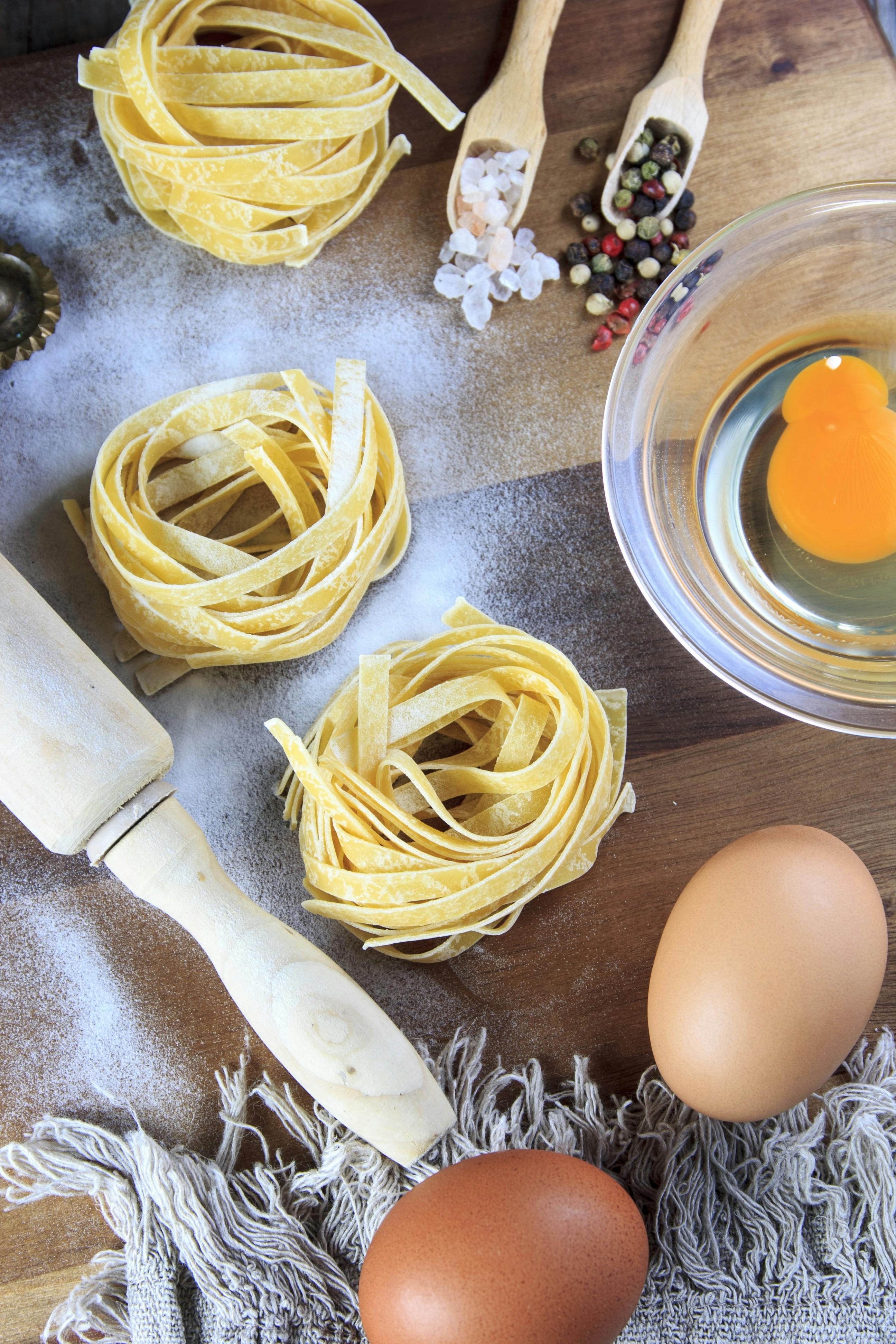| The History of Carbonara:
Carbonara is a classic Italian pasta dish that originated in Rome around the mid-20th century. Its name likely comes from "carbonari," meaning charcoal burners, possibly referencing the black pepper that looks like charcoal dust. The dish combines simple ingredients—eggs, Pecorino Romano cheese, guanciale (cured pork), and black pepper—to create a creamy sauce without cream. While its exact origins are debated, many believe it was influenced by American soldiers during WWII, who introduced ingredients like bacon and powdered eggs that inspired the dish we know today.
| The History of Amatriciana:
Amatriciana (or sugo all'amatriciana) is a traditional Italian pasta sauce that originated in the town of Amatrice in central Italy, in the Lazio region. The dish dates back to at least the 18th century and evolved from an earlier recipe called gricia, which didn’t include tomatoes. When tomatoes were introduced to Italian cuisine in the 18th century, they were added to gricia, creating what we now know as amatriciana. The classic ingredients include guanciale (cured pork cheek), Pecorino Romano cheese, tomatoes, and sometimes chili pepper. It's most commonly served with bucatini or spaghetti and is considered a cornerstone of Roman cuisine, despite its roots in nearby Amatrice.
| The History of Pasta al Pesto:
Pasta al pesto refers to pasta served with pesto alla genovese, a sauce that originated in Genoa, the capital of Liguria in northwestern Italy. The name "pesto" comes from the Italian word pestare, meaning "to pound" or "crush," which describes the traditional method of preparing the sauce with a mortar and pestle. The classic ingredients include fresh basil, garlic, pine nuts, Parmigiano-Reggiano (or Pecorino), salt, and extra virgin olive oil. Pesto as we know it dates back to at least the 19th century, though it was influenced by older garlic- and herb-based sauces from the region. It's most often paired with pasta types like trofie or trenette, and sometimes served with potatoes and green beans cooked in the same pot as the pasta.
| The History of Pasta al Ragù:
Pasta al ragù refers to pasta served with a slow-cooked meat sauce known as ragù, with the most famous version being Ragù alla Bolognese from Bologna in northern Italy. This dish has its roots in the 18th or early 19th century and was influenced by French meat stews. The traditional Bolognese ragù is made with finely chopped beef (sometimes pork), onions, carrots, celery, tomato paste, wine, and milk or cream, simmered slowly to develop rich flavor. It's not very tomato-heavy compared to other Italian sauces. While many people serve it with spaghetti, in Bologna it's traditionally paired with tagliatelle, a broad, flat pasta that holds the sauce better. It's also the base for lasagna alla Bolognese.
| 